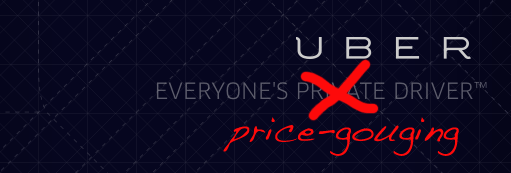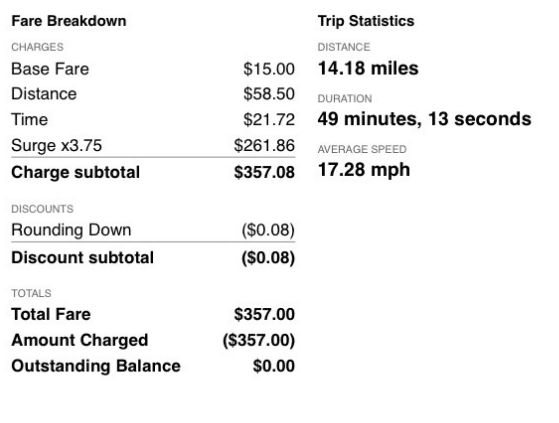How A 12-Mile Car Ride Can Cost $357.08

Is it price-gouging, or just supply and demand in action?
One person’s “supply and demand” is another person’s “price gouging.” Uber, a smartphone app that matches up professional drivers who want to pick up strangers and people in need of rides, is a serious competitor for licensed taxis in many cities, but its business model has one feature that taxis generally don’t: surge pricing.
A “surge” means “a lot of people want to get in a car right now.” This past weekend, when a lot of snow fell on Northeastern cities, this meant “surge” fares of seven or eight times the standard fee.
The company claims that this is necessary because drivers won’t be out on the roads at busy times or in treacherous conditions unless they’re getting paid extra for the privilege.
At least in, say, New York City, you theoretically can take a subway or walk. In our nation’s more sprawl-intensive cities, there is no other option. You need to drive yourself, beg a ride, or pay someone. This is what one Gawker reader’s Uber bill looked like during a twelve-mile ride to Hollywood that took less than an hour. It cost $357, at a surge rate of only 3.75 times the normal rate.

The problem, which causes some customers to send angrygrams to the company’s CEO, is that the company discloses the surge pricing when they book a trip, but not how it will affect their total. There’s a difference between “$175 minimum” and “we’re charging your credit card $700 now.” Why should they? It’s not like anyone is regulating their drivers or anything.
The $357 Uber Ride [Valleywag]
The Weekend Uber Tried To Rip Everyone Off [Valleywag]
Uber’s CEO Is Laughing at You on Facebook [Valleywag]
Want more consumer news? Visit our parent organization, Consumer Reports, for the latest on scams, recalls, and other consumer issues.

